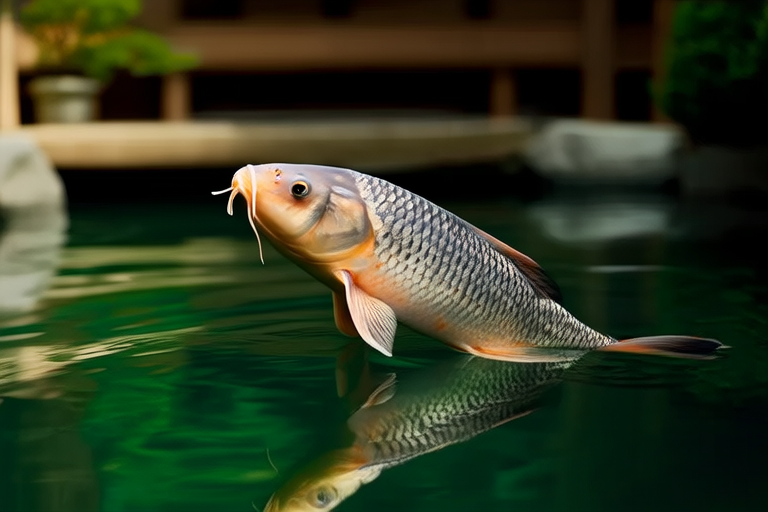Unveiling the Majestic World of Koi: Nature’s Underwater Masters
Koi, those graceful, vibrant fish often found in serene ponds, have long been revered as symbols of luck and beauty. Their presence can transform any garden into a tranquil oasis, offering both aesthetic appeal and a sense of peace. Beyond their visual allure, koi hold deep cultural significance, especially in Japan, where they originated. This article delves into the rich history, diverse breeds, and the art of koi keeping, while also exploring the spiritual and therapeutic benefits these magnificent creatures offer.
The Origins and History of Koi
The story of koi begins in ancient China, where they were initially bred as a food source. However, their beauty quickly caught the attention of the Chinese nobility, who began to appreciate them for ornamental purposes. The practice of keeping koi spread to Japan during the Heian period (794-1185 AD), where they became deeply embedded in Japanese culture. Over time, Japanese breeders refined the species, developing a wide array of distinct breeds, each with its own unique characteristics and patterns.
In Japan, koi are not merely decorative; they are symbols of perseverance and strength. Their ability to thrive in challenging environments has made them metaphors for resilience. The famous legend of the Dragon Gate tells of koi that swim upstream against strong currents, eventually transforming into dragons. This tale has inspired generations, teaching the value of determination and the rewards of persistence.
Varieties and Distinguishing Features
Koi come in many varieties, each with distinctive colors and patterns that make them truly unique. The most common types include:
- Shibunko: Known for their striking red and white coloration, shibunko are among the oldest varieties.
- Tancho: Characterized by a single red spot on their head, resembling the Japanese flag.
- Asagi: These koi feature a blue-gray back and a light blue or pink belly.
- Platinum Ogon: With their shimmering metallic scales, platinum ogon koi are a stunning sight.
Each variety requires specific care and attention, but all share a common trait: their ability to captivate and inspire admiration. Understanding the nuances of each breed is essential for anyone interested in koi keeping.
The Art of Koi Keeping
Keeping koi involves more than just maintaining a pond; it’s about creating a harmonious ecosystem that supports the health and well-being of your fish. Proper pond design is crucial, ensuring adequate filtration, oxygenation, and protection from predators. Water quality is paramount, with regular testing and maintenance to prevent harmful bacteria and algae growth. A balanced diet is also vital, providing nutrients necessary for vibrant coloration and overall health.
Creating an ideal environment for koi requires attention to detail. Koi prefer cool, clean water, so regular water changes and the use of biological filters are essential. Additionally, the pond should be large enough to allow for ample swimming space and should include hiding spots such as plants and rocks. Koi are social animals, thriving in groups, so it’s advisable to keep at least three or four together.
Cultural Significance and Symbolism
Globally, koi carry significant symbolic meanings. In Japan, they symbolize good fortune, success, and longevity. Their association with perseverance makes them popular gifts for important occasions like weddings and birthdays. In Chinese culture, koi represent love and loyalty, often depicted in traditional art. The fish’s ability to overcome obstacles resonates deeply with the human experience, making them powerful symbols of personal growth and achievement.
The spiritual significance of koi extends beyond their physical beauty. In Feng Shui, they are believed to bring positive energy and balance to a space. Their presence is thought to promote harmony and tranquility, making them ideal additions to gardens and homes. In Western cultures, koi ponds have become increasingly popular, not only for their aesthetic appeal but also for the serenity they bring to the surroundings.
Therapeutic Benefits of Observing Koi
Beyond their cultural and symbolic importance, koi offer numerous therapeutic benefits. Watching koi glide gracefully through the water can induce a state of calm and relaxation, reducing stress and anxiety. Many people find solace in the gentle movements of these fish, which can help focus the mind and promote mindfulness. For those seeking a peaceful retreat from the chaos of daily life, observing koi provides a natural remedy for mental fatigue.
The act of caring for koi can also be meditative. Tending to the needs of these fish encourages patience and mindfulness, fostering a deeper connection with nature. Engaging in the routine of feeding, cleaning, and monitoring the health of your koi can be a rewarding and fulfilling experience, enhancing one’s sense of purpose and well-being.
Conclusion
Koi are more than just beautiful fish; they are ambassadors of peace, perseverance, and beauty. From their ancient roots in China to their cherished status in Japan, koi have captured the hearts and imaginations of people around the world. Whether admired for their striking colors, revered for their symbolic meanings, or cherished for their therapeutic benefits, koi continue to enchant and inspire. By understanding and appreciating the majesty of these underwater masters, we can enrich our lives and our surroundings, bringing a touch of serenity to even the busiest of days.
